SummaryAirport Rating n/a Reception of locals ***** Cost: ££££
Super ShanghaiBefore I got to China, if there was one city that I was looking forward to seeing, it was definitely Shanghai. From the outside looking in, this is the city that sums up the transformation that China has gone through over the past several decades, the rapid growth, the shiny new buildings, and a skyline that is world famous. ....and it didn't disappoint. The history of Shanghai is best described by that word, transformation. Originally a small fishing village, its strategic location along the Yangtze River Delta catapulted it into the limelight during the mid-19th century. The Treaty of Nanking in 1842, which concluded the First Opium War, between the UK and China (where the UK was basically a drug dealer) opened Shanghai's ports to international trade which really began its growth as the commercial and industrial engine of China. The ensuing decades saw a flurry of foreign investment and the establishment of the International Settlement and French Concession, which made Shanghai completely different from other Chinese cities. It was also here where Sikh policemen operated as instruments of colonisation around the turn of the 19th century. As Shanghai opened to the world, the international powers sought to maintain order and security within this burgeoning metropolis. Sikh policemen, recruited from the British holdings in the subcontinent, became an iconic part of Shanghai's landscape, patrolling the streets in their distinctive turbans and uniforms. As the 20th century progressed, Shanghai became a symbol of East meets West - sort of the way we think about Hong Kong and Singapore, with art deco buildings lining the Bund and jazz music filling the air. But it wasn't all smooth sailing, with periods of turmoil including Japanese invasion during the Second World War and the devastation bought on during the Chinese Civil War and the Cultural Revolution. It wasn't until the economic reforms of the 1980s and 1990s that Shanghai began to reclaim its status as a global financial hub. Today, Shanghai stands as a testament to China's rapid development and ambition. It's the country's largest city by population, with over 24 million residents with a significant amount of economic migrants from the US, UK, Europe, as well as the various regions of Asia. There is also a small but visible amount of migration from the African continent. Economically, Shanghai is a powerhouse, not just within China but on the global stage. It's home to the world's busiest container port, it hosts the Shanghai Stock Exchange, one of the world's largest by market capitalisation, and it has some of the most iconic buildings in the world. The city is a vast urban landscape that is both luxurious and ultra-modern, but also masks growing wealth inequality in the city. You have people from all of China's countryside working in the city looking to support their family back home for very low wages, but you also have the "it" crowd, children of famous financiers, industrialists, and politicians that have a reputation across China as being quite spoiled. Beijing - ShanghaiThe first thing I want to cover is the journey from Beijing to Shanghai which I think perfectly shows the progress China has made in recent decades. The bullet train journey from Beijing to Shanghai is a significant route in China's extensive high-speed rail network, connecting two of the country's largest and most influential cities. Covering a distance just of 800 miles, the journey between Beijing and Shanghai took less than five hours and the trains on this route reached speeds of up to 350 kilometres per hour. The station in Beijing is pretty straight forward to get through (you show your passport / ID, train ticket, and make your way through airport like security. The train stations in China are huge, it feels like a city within a city, but everything is quite easy to follow. Ticket prices for the journey vary depending on the class of service. A second-class ticket, which offers comfortable seating and ample legroom, is typically priced from around CNY550 about £60, while first-class tickets, providing more spacious seating and additional amenities, can cost upwards of CNY930 (about £100). Beyond this are the business class seats where you basically have a self-contained chair that can turn into a flat bed, much like business class in airlines. Honestly, all classes of seats are infinitely more comfortable than their equivalents in countries like the UK and US while ticket prices are a fraction of the cost. The Beijing-Shanghai route is served by multiple trains daily, departing from Beijing South Railway Station and arriving at Shanghai Hongqiao Railway Station. Shanghai Hongqiao Railway Station is located adjacent to Shanghai Hongqiao International Airport, one of the city's two major airports. While this proximity allows for easy transfers between train and air travel, it also means the roads leading into and out of the station are incredibly busy and filled with traffic. It's also strange to see both an airport and a train station right next to each other with exactly the same design for the terminal buildings. The journey itself takes you through the Chinese countryside as well as regional cities. Along its route, the bullet train passes through several major cities, including Jinan, the capital of Shandong Province; Nanjing, the capital of Jiangsu Province; and Suzhou, known for its classical gardens and traditional waterside architecture. In different parts of the journey you see the natural side of China, the industrial side, the large building projects, the "ghost" cities, and so much more. It's certainly a journey I would recommend taking rather than flying. Powerful PudongI stayed in Pudong, one of the newer parts of the city that has developed into one of the world's leading financial and commercial centres since the Chinese government designated it as a Special Economic Zone in 1990. The development of Pudong has been marked by the construction of an array of high-rise buildings and architectural landmarks. The skyline is now dominated by the Shanghai Tower, which at 632 meters is China's tallest building and the second tallest in the world. And unlike the tallest building in the world (which you can read about here) this one actually looks good. In the day it curves into the sky in a mesmerising, slender way, while at night it is lit up and dominates the skyline. Alongside it, the Oriental Pearl Tower, with its distinctive spheres and futuristic design, serves as a television and radio broadcast site and is a prominent symbol of the city's skyline (its the thing you always see when there is any news about the city on TV). The Shanghai World Financial Center, another architectural marvel, is known for its unique opening at the top and houses offices, hotels, and observation decks offering panoramic views of the city. Pudong also houses the Lujiazui Finance and Trade Zone, which has become the financial hub of not only Shanghai but arguably of China itself, hosting the Shanghai Stock Exchange and numerous national and international financial institutions. This concentration of financial services has been instrumental in Shanghai's development as a global financial centre (a little like Canary Wharf or Manhattan). Walking around Pudong you can see also the large financial firms, consultancies and legal offices, and the district is designed for working. However, Pudong is also home to several green spaces and cultural sites like Century Park, the largest park in the city, which has landscaped gardens, lakes, and recreational facilities. Additionally, the Shanghai Science and Technology Museum provides educational exhibitions and interactive displays. I took a walk along the Pudong side of the Huangpu River that runs through Shanghai and during the evening it provides a unique perspective on the city. The promenade has a well-defined path for walking and cycling and during my evening walk the view towards the Bund, the historic waterfront area on the opposite side of the river known for its colonial-era buildings was incredible. Unlike walking along the opposite (and more popular) side of the river, on the Pudong side it is relatively quiet and you're not jostling for places to see good views. It's definitely something that I would recommend. That being said, there are also some issues between the Pudong side, and the older parts of the city. For one, crossing the river, particularly in cars, can be tricky during busy times as traffic can make a relatively short 10-minute journey anything up to an hour. Likewise, unless you use a local taxi app, you'll find it almost impossible to flag down taxis and the ones that you do will almost always try to rip you off, so it's important to stay aware. Finally, it can be tricky finding affordable restaurants, particularly during the evening. Historical BundCrossing over the river from Pudong brings you near the Bund, officially known as Zhongshan Dong Yi Road, a prominent waterfront area in central Shanghai that runs along the western bank of the Huangpu River. It is famed for its role in Shanghai's history and for the unique collection of architectural styles along its stretch. Historically, the Bund has been at the forefront of Shanghai's development since the British settlement in the mid-19th century, following the Treaty of Nanking in 1842. This period marked the opening of Shanghai as a treaty port, leading to an influx of international trade and investment. The buildings along the Bund were originally factories constructed by various foreign powers that had concessions in the city, each bringing their architectural preferences to their banks, trading houses, and consulates. As a result, the area features a mix of styles including Gothic, Baroque, Neoclassical, and Art Deco, making it a unique architectural showcase. The British influence on the Bund is, unsurprisingly, strong with several buildings reflecting British architectural styles. The HSBC Building, now the Shanghai Pudong Development Bank, at No. 12, The Bund, is a prime example. Built in 1923, it was once the headquarters of the Hongkong and Shanghai Banking Corporation and is considered a masterpiece of neo-classical architecture. The American presence is represented by buildings such as the former Shanghai Municipal Council Building, which now houses the Shanghai Foreign Exchange Trade Center. This building, located at No. 2, The Bund, was designed in a neoclassical style and completed in 1909, serving as a symbol of American architectural and economic influence. The French Consulate, located at No. 20, The Bund, exemplifies French architectural elegance. While not as large or imposing as some of the other buildings, it represents the French contribution to the Bund's international flavour - and don'y worry, we'll come back to the French influence on the city a little later. The Yokohama Specie Bank Building, now the China Foreign Exchange Trade System building, at No. 24, The Bund, was constructed in 1924. This building showcases Japanese influence on the Bund with its Renaissance style, reflecting Japan's economic interests in Shanghai during that era. The Banca d'Italia Building, though less well-known, represents Italian architectural influence. Italian-styled buildings along the Bund have been repurposed and now serve various commercial functions, blending seamlessly with the area's eclectic architectural heritage. The former North China Daily News Building, at No. 17, The Bund, built in 1921, represents German architectural style. It served as the office for the most influential English-language newspaper in Shanghai at the time and is an example of the international media presence on the Bund. It's a super fascinating and interesting stretch of road that really shows the extent of international trade that is embedded into the construction of Shanghai. Today, the Bund remains a significant financial and tourist district in Shanghai. The area is lined with financial institutions, luxury shops, and upscale restaurants. The historical buildings have been repurposed to house a variety of functions while retaining their original facades. The promenade along the Bund has a panoramic view of Pudong's skyline across the river, creating a contrast between the historical architecture on one side and the modern skyscrapers on the other. This side is much, much busier than the Pudong side of the river, but from here you can see the large skyscrapers like the Shanghai Tower and the Oriental Pearl Tower on the opposite bank. Now, let's put a little context on this. It's beautiful for sure, but it feels very European, and when you think about similar buildings in Europe, the 1920s would be considered relatively new. Similarly, it's a decent stretch of road, but it is just a road and not a whole neighbourhood. That being said, the comparison of the two sides of the bank is pretty amazing and its worth checking out. Old meets newBehind the Bund there are several pretty cool places to visit. I don't like shopping (as readers of this website are probably well familar with) but Yuyuan Shopping Centre is a distinctive commercial district that presents a blend of traditional Chinese architecture and modern retail concepts. The centre encompasses a network of narrow lanes and open squares, lined with buildings that feature upturned eaves, ornate wooden carvings, and intricate latticework, all characteristic of traditional Chinese architecture. There are many entrances to get in, and during the evenings it gets very busy. I went during the day and during the night and got two very different types of experience. It's quieter during the day, much calmer, with a focus on shopping, Sure, you get random people trying to sell you watches and clothes (especially if you stand out as a foreigner) but it's relatively calm. During the evening, it's much livelier with lights, queues outside some of the more popular restaurants, and a lot more energy. I was under the impression that Chinese citizens were very compliant but on more than one occasion in this area I saw people shouting loudly at police officers and on one occasion an older couple were really going in hard against a local police officer. The centre is home to several teahouses and restaurants, some of which are situated in historically significant buildings. Here you can have traditional Chinese tea ceremonies and try local Shanghai cuisine, which is heavy on soy sauce and colour red. You have many souvenir shops and some nice stores selling popular silk scarves. The centre's layout and design encourage exploration, with its maze-like lanes and hidden courtyards offering surprises around every corner. This design serves to manage the flow of visitors meaning people are almost forced to see every shop (a little like the way Ikeas are set up). I visited just before Chinese New Year and there were a lot of interactive plays going on with costumes, dancing, and a lot of light shows. Garden in the cityNearby, borderling the same complex, is Yuyuan Garden, a historical landmark that dates back to 1559. It was commissioned by a wealthy merchant named Pan Yunduan as a private space for his father, Pan En, to enjoy a tranquil and comfortable retirement. This garden, spanning approximately 5 acres, represents a significant example of classical Chinese garden design, incorporating traditional landscaping techniques to create a harmonious blend of natural beauty and architectural elegance. I wouldn't try and compare this to urban parks that you might be more familiar with in Europe or North America, it feels much more intimate. The closest I would describe is Holland Park in London (which you can read about here). The design of Yuyuan Garden is based on the principle of creating a microcosm of natural scenery within a limited urban space. You have rocks, water, plants, and pavilions to simulate the diversity of natural landscapes, from rugged mountains to serene lakes. The garden's layout, with winding paths, leads you through a series of scenic compositions, each designed to offer a unique experience and perspective on traditional Chinese aesthetics. Among the attractions within Yuyuan Garden are the Exquisite Jade Rock, a highly porous limestone rock that is notable for the way it allows water to flow through it, creating interesting visual effects. The Grand Rockery, another focal point of the garden, is a large rock formation that visitors can climb to gain a panoramic view of the garden's layout and the surrounding cityscape. The Heralding Spring Hall, the Lotus Pool, and the Inner Garden are other significant features, each contributing to the garden's overall atmosphere of peace and contemplation. The garden also includes several historically important pavilions and halls, such as the Hall of Joy and Longevity and the Pavilion of Listening to Billows, which were used for various family and social gatherings. Entry to Yuyuan Garden is ticketed, with prices generally ranging from 30 to 50 yuan (about a fiver) depending on the season and it's an important feature of the city - one that the Chinese have done well to maintain. Over the centuries, it has undergone several periods of decline and restoration, particularly during the 19th century when it was severely damaged during the Opium Wars and the Taiping Rebellion. However, extensive efforts to restore the garden to its former glory were undertaken in the 20th century. Today, for me, it's one the best parts of the city. Taoist TempleAgain, almost adjacent to the garden is yhe City God Temple, or Chenghuang Miao. This Taoist temple, dedicated to the local city god, has played a central role in the spiritual life of Shanghai's residents since its establishment around 1403, when it was initially set up to honour the spirit of Jinshan (Gold Mountain), before being converted into a City God Temple. I had to visit twice to get inside - it was closed during my first visit so it's important to check beforehand the opening times. Entry to the City God Temple requires a ticket which you can buy at the door for less than a pound. Historically, the City God Temple served not only as a place of worship but also as a community centre where the locals would gather for festivals and public events. The temple was dedicated to Huo Guang, a Han Dynasty official, and later included the worship of the legendary figure Qin Yubo, who was posthumously honoured as the city god of Shanghai in the Ming Dynasty. Over centuries, the temple complex expanded and underwent several renovations, reflecting the growth and changing dynamics of Shanghai itself. Walking in the first thing I experienced was the overwhelming smell of incense as many people were praying. Being a communist country, China tried often throughout the 20th century to reduce the influence of religion, but here I saw a lot of people praying very deeply. The temple complex comprises several halls, including the main hall dedicated to the City God, the Hall of the City God's Wife, and the Hall of Wealth, each serving different devotional purposes. The architecture of the temple is characteristic of traditional Chinese religious structures, with ornate carvings, upturned eaves, and intricate decorations that symbolise various aspects of Taoist cosmology and belief. The statues within the halls are incredible representing different parts of Taoist religion and I really enjoyed getting to learn a little more about one of the less well understood of the large religions. Nanjing RoadGoing a little further from the river is Nanjing Road, known for its commercial significance. This road divides into two main sections: Nanjing Road East, leading up to the Bund, and Nanjing Road West, extending towards the Jing'an District. The eastern section of Nanjing Road has historically been the more commercial part, evolving from a path with a mix of small shops into one of the busiest shopping streets in the world. The transformation was marked by the introduction of the first department stores in the early 20th century, which brought a variety of goods and modern retail concepts to the Chinese market. Over time, this area has become a microcosm of Shanghai's retail evolution, hosting everything from traditional Chinese stores to global luxury brands. Today it is like the Shanghai equivalent of Wangfujing in Beijing (or Oxford St in London). Nanjing Road West offers a contrast to its eastern counterpart, with a focus on high-end shopping and dining. This section is known for its more upscale atmosphere, featuring designer boutiques, luxury department stores, and five-star hotels. The architecture along Nanjing Road West blends historic buildings with modern developments, reflecting the city's growth and the changing tastes of its residents and visitors. Pedestrianisation has been a key feature of Nanjing Road East since 1999, and it means the wide street is basically packed with people. However, while the street itself is pedestrianised, the roads that intersect it are not, you can have random points where you have traffic lights in the middle of a pedestrian road, with policemen trying (often in vain) to stop people crossing while lights are red. Again, this sort of bending the rules by citizens was something I was pretty surprised to see. Former French ConcessionGoing a little further still in to this part of the city and you can across the Former French Concession in Shanghai, established in the mid-19th century. This portion of Shanghai, once administered by the French government, is a testament to the city's colonial past and its evolution into a modern metropolis while just about maintaining some of its heritage. The concession's boundaries have changed over time, but it traditionally covers a substantial area in the heart of Shanghai, extending from the Bund to the west and southwest. Characterised by tree-lined avenues, European-style villas, and a mix of Chinese and Western architectural influences, the Former French Concession is a little bit of Paris in Shanghai. You have French looking buildings, cafes, and even French language signs everywhere. In a way, it reminded me a little of parts of Hanoi (which you can read about here). One of the most iconic buildings within the Former French Concession is the Normandie Building, often compared to New York City's Flatiron Building due to its distinctive wedge shape. Located at the intersection of Wukang Road and Anfu Road, the Normandie Building, also known as the Wukang Mansion, was completed in 1924 and designed by the renowned Hungarian-Slovak architect László Hudec. This place was packed with influencers and photographers with a lot of Chinese girls dressed in French clothes (or what they think people in France wear - like berets) taking photos in front of the building. A little funny, a little weird, and a little cringe. The Former French Concession also has houses, cafes, and restaurants that blend the area's historical charm with contemporary lifestyle trends. These establishments are often tucked away in refurbished historic buildings, offering experiences that reflect the fusion of Eastern and Western influences typical of Shanghai. The area's residential architecture is particularly notable for its preserved "shíkùmén" houses, traditional stone gate houses that combine Western and Chinese architectural elements. These houses, with their courtyards and intricate wooden carvings, are emblematic of the concession's cultural and historical identity. Outside many of these houses you have pretty expensive cars which reflects the upscale part of this neighbourhood. If I ever moved to Shanghai (and it's a pretty cool city), this would be where I'd want to live (if I could afford it) A little HangzhouInitially, I thought I could write a separate article for Hangzhou, the famous city a stones throw from Shanghai, but I didn't spend enough time there to justify something separate. All I know is that the little I saw, I loved, and it'll be the top Chinese city on my list when I come back. Hangzhou can trace its origins back over 2,200 years to the Qin Dynasty. It has long been a prosperous city, benefiting from its strategic location at the southern terminus of the Grand Canal, which historically facilitated trade between northern and southern China. The city's historical significance is further cemented by its role as the capital of the Southern Song Dynasty (1127-1279), a period during which it flourished as a centre for culture, arts, and commerce. Travelling from Shanghai to Hangzhou can be done on high-speed rail services and the journey between the two cities took me about 45 minutes. The cost of a ticket on these high-speed trains varies, generally ranging from approximately 73 to 147 yuan for a second-class seat, which means you can commute between the two cities for about £10 -£15. One of Hangzhou's most renowned features is the West Lake, a UNESCO World Heritage site. The lake is enveloped by mountains on three sides and is incredibly beautiful and deceptively large. The West Lake is not just a natural wonder but also a masterpiece of landscape design, with its shores and islands embellished with pagodas, pavilions, gardens, and arched bridges, meticulously laid out to blend harmoniously with the natural scenery. It's what inspired the Summer Palace that I enjoyed so much in Beijing (which you can read about here). The lake is segmented into five distinct sections by three causeways and is dotted with numerous temples, pagodas, and gardens that have historical significance. Notable landmarks include the Leifeng Pagoda, a five-story tower with an eight-sided base that offers panoramic views of the lake, and the Lingyin Temple, one of China's most important and oldest Buddhist monasteries. On the lake you have boats that look like houses, floating restaurants, and dragon boats that are beautifully designed. Some of the structures I saw floating around made me question had they manage to stay afloat or not get capsized by wind, it's a real unique experience. Hangzhou's history is also marked by its contributions to Chinese culture, including tea culture, with the region being famous for producing Longjing (Dragon Well) tea, one of China's most prestigious green teas. Furthermore, the city played a pivotal role in the development of the silk industry, a legacy that continues today with the Hangzhou Silk City, a market dedicated to silk products. Both tea and silk dominate the shops of the city and give the city a magical feel. Hangzhou's allure extends beyond its scenic landscapes and historical monuments. The city is a hub for technology and innovation, home to the headquarters of Alibaba, one of China's largest and most influential technology companies. The campus of Alibaba and Ant Group dominates sections of the city but also drive up property prices as people from all over the country come here to find high paying and profile jobs. I wish I had time to see more of the city. I spent a week in Shanghai but only a day in Hangzhou and it's definitely something that warrants at least 3 or 4 days, and I'm pretty sure I'll be back at some point. Would I recommend visiting Shanghai?Yes. I wasn't too impressed by either Shenzhen or Beijing (although I preferred the latter) but Shanghai was everything that I thought it would be, and maybe even a little more. There is an energy and dynamism here that was lacking in the other cities, and it feels like there is something for everyone. Sure, the same issues exist in Shanghai as in the rest of China, but it is definitely my favourite Chinese city, so far. As a Sikh I had no problems at the train station or anywhere else in the city. People are generally polite, but you have to be careful of scalpers trying to sell you dodgy watches, or taxi drivers trying to rip you off. Also - and I can't stress this enough - you need AliPay or WeChat in order to function in this city. Without this you can't pay for anything, see many of the sites, or even call taxis (although you can also try "MyChinaTaxi"). It's also smart to try and have some sort of ID on you (preferably your passport) as most landmarks where you need to pay to get in often require some form of ID. Shanghai might be my favourite city for now, but I wish I had seen more of Hangzhou - but the parts that I saw impressed me a lot. It is a place that I would definitely like to revisit and spend some more time. Comments are closed.
|
AuthorBritish Sikh, born in the Midlands, based in London, travelling the world seeing new cultures. Categories
All
|



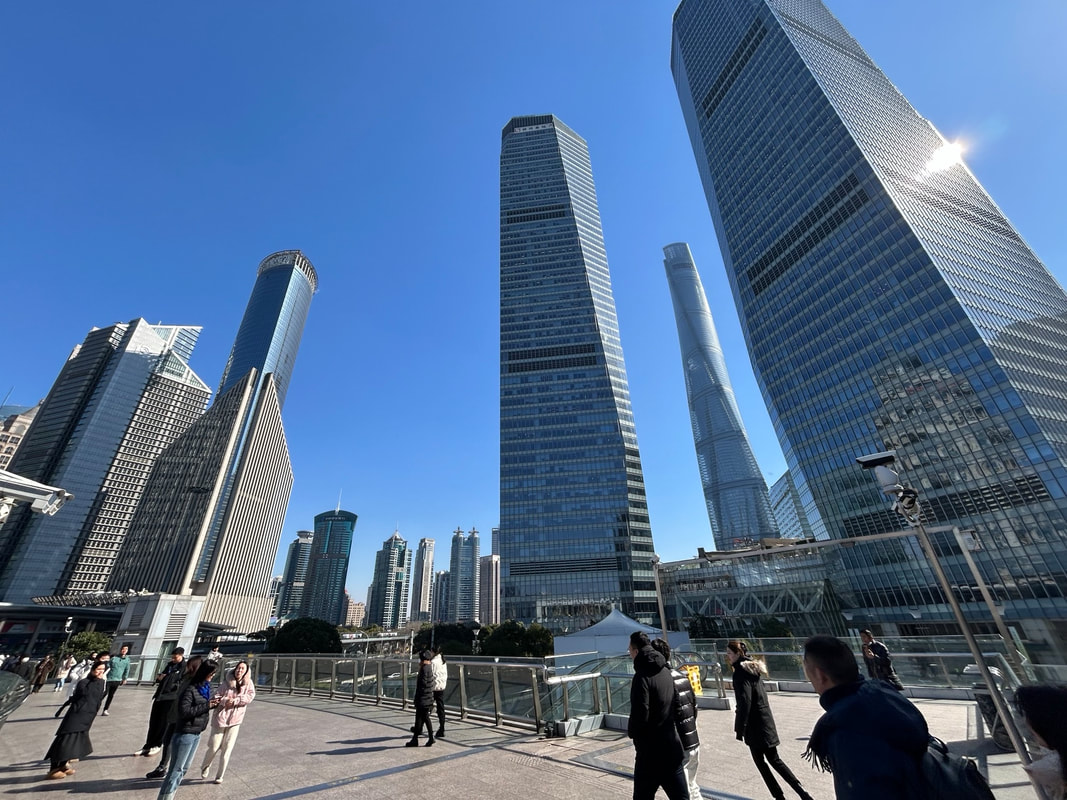

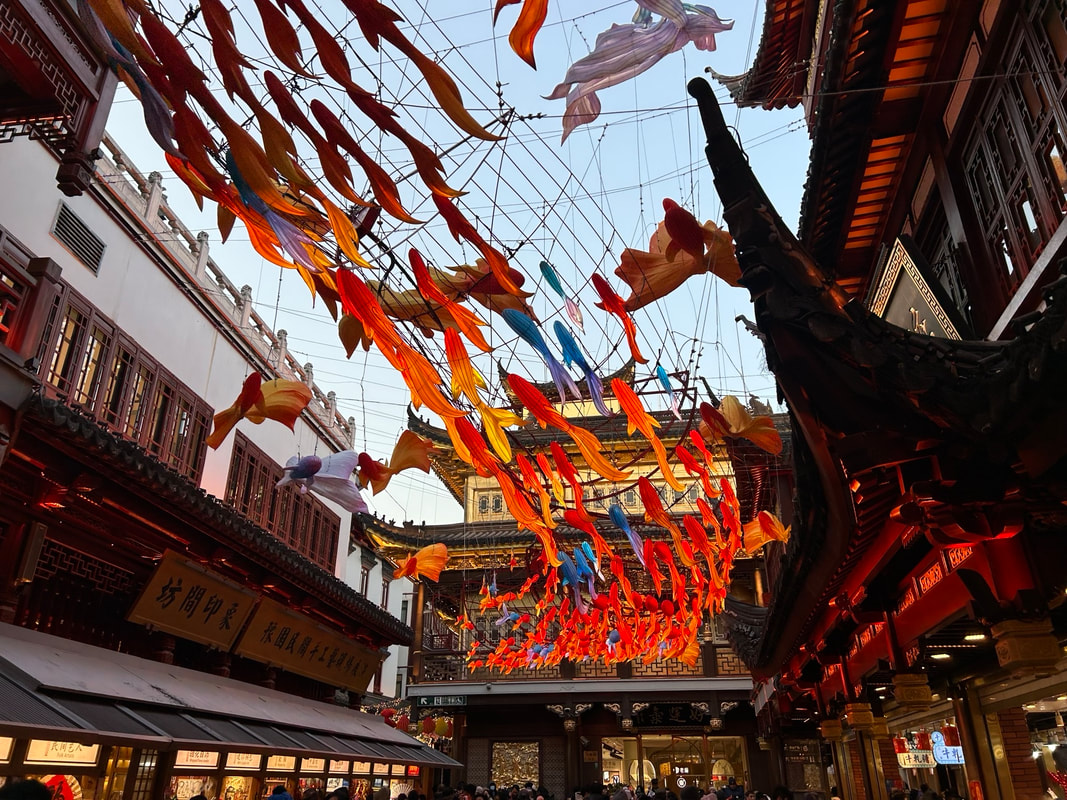
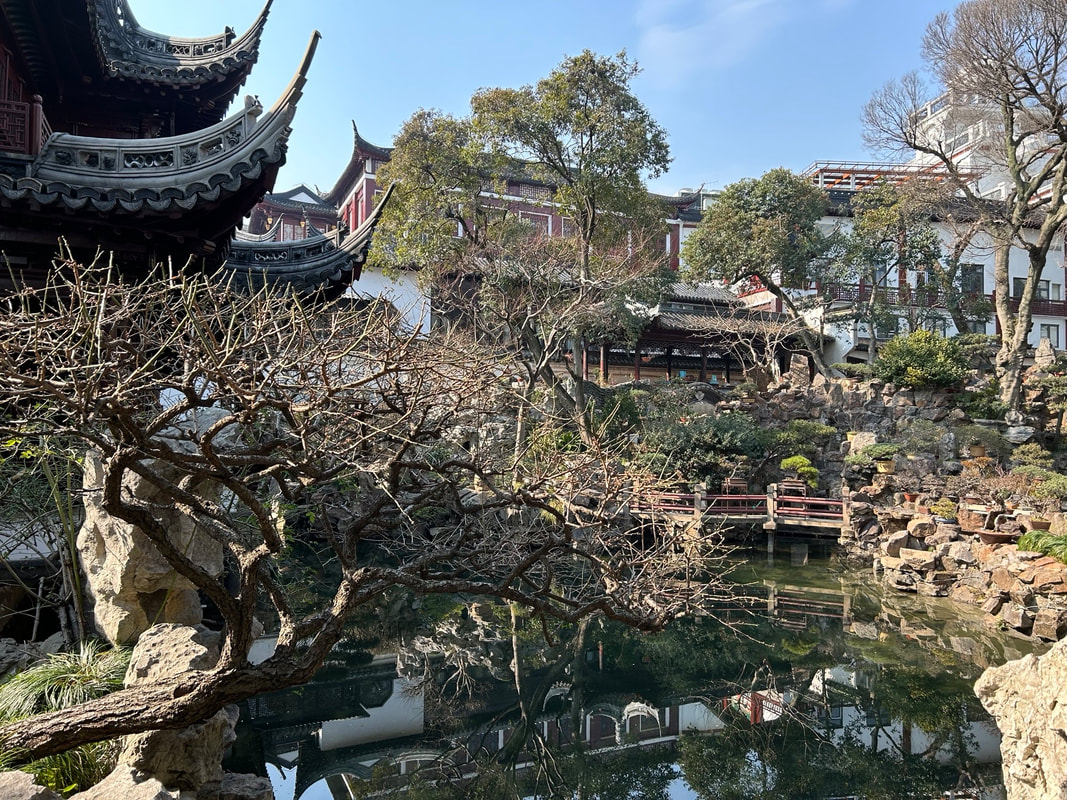
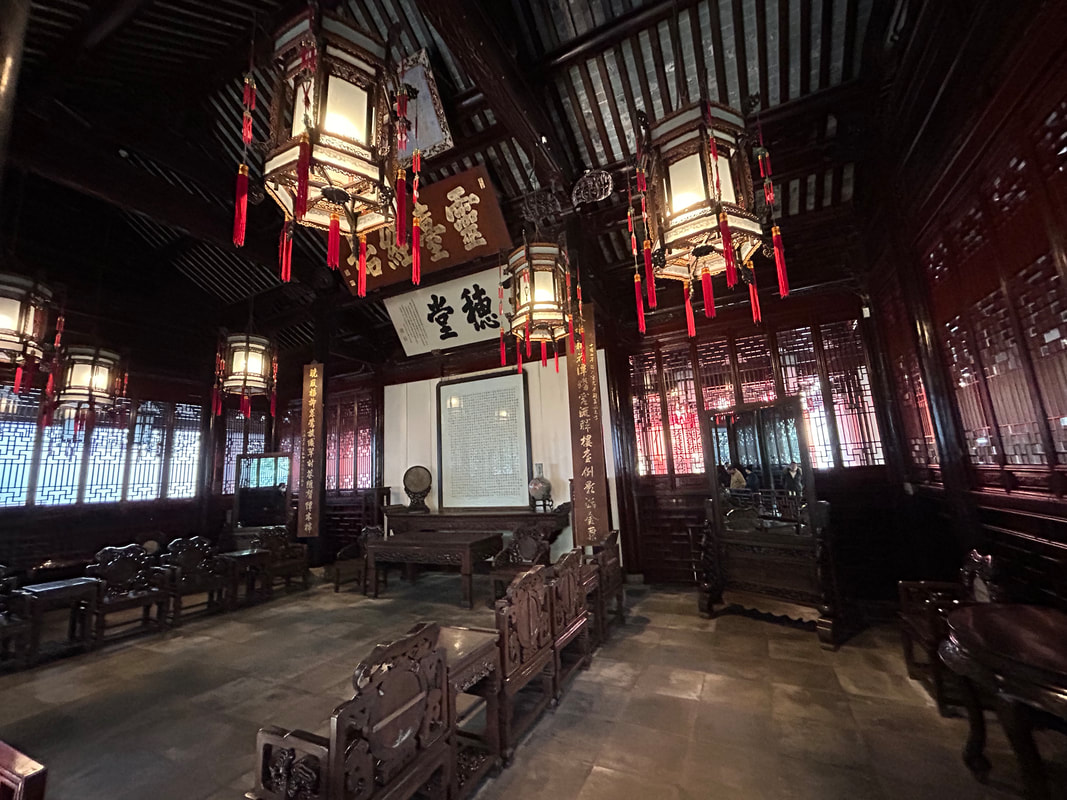



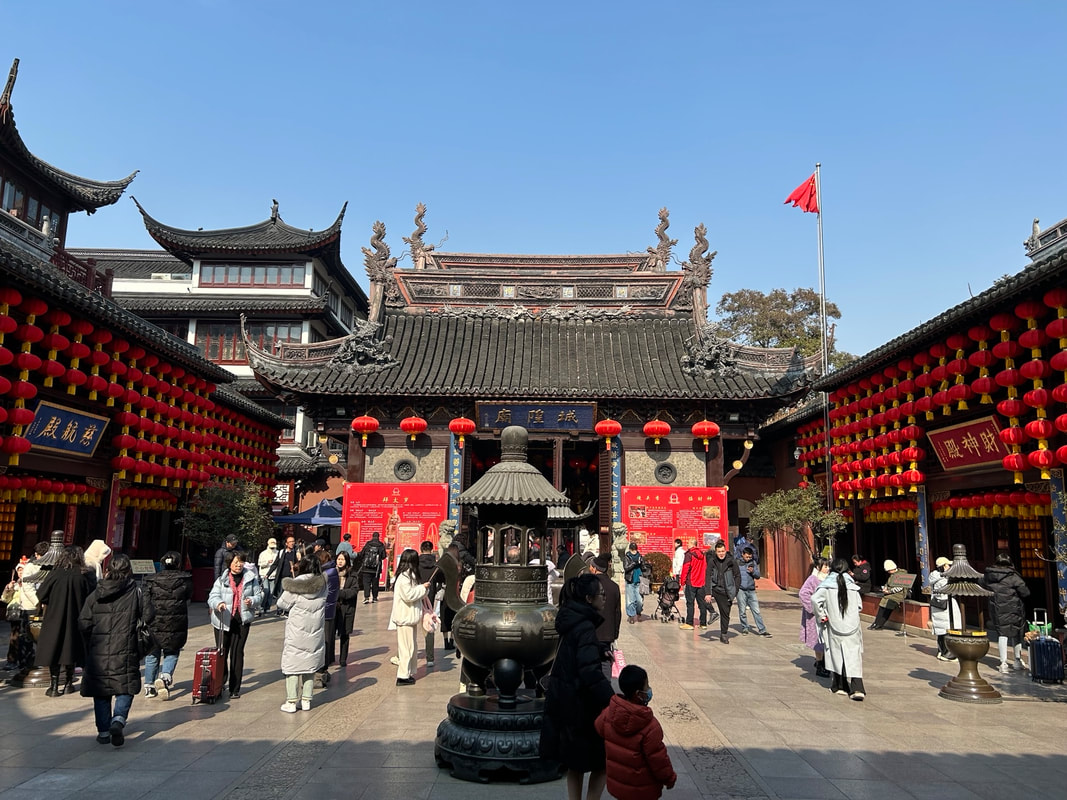

 RSS Feed
RSS Feed